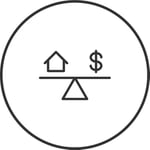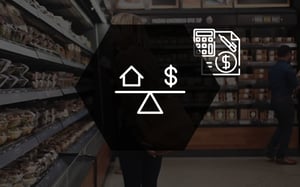Pricing, while not a glamorous part of business, is arguably as important, if not more so than understanding your customers. This is because in pricing products, you’re creating a certain perception around your store. Price too high and your customers will view you as too expensive. On the other hand, price too low and your products can seem cheap or unappealing.
At the same time, pricing (and especially if you’re a small retailer) comes down to perceived value vs perceived cost.
Knowing that, the argument for implementing a pricing strategy becomes easy enough win. Besides taking into account your segments, a pricing strategy also considers market conditions, your competitor’s actions, trade margin and more.
Besides the above, here are a few more reasons why, as a smaller retailer, you need to invest in a pricing strategy.

To increase your market share and beat the competition
Considering the competitiveness that envelopes the retail world, pricing can be used as a shrewd tactic to protect your market share. In fact, it’s one of the best. If you’re in a pricing war with one of your competitors, a great way in which to beat them is to drop your prices.
Of course, as a small retailer, you do need to be careful in dropping your prices too low. As stated above, your price can give off a negative perception of your store. But it’s more than that. While you might be making more sales, be aware of all possible long-term costs to your business. One consequence is a situation where after tallying up your monthly expenses, you find that your business is going under.
Once you’ve dropped your prices, and your customers have had time to try your product and develop some form of loyalty, you can push them back up again. Just make sure that the price you do settle on places your customer first.
If you want to find the perfect price point, retail analytics can also help you.

To drive image or status perception of your brand
While pricing your product too high can drive people away, it is surprising to note that it can also drive a status perception, which can pull customers into your store.
That is because shoppers may feel that paying a premium for a product elevates the status of shopping at your store. It will also tell your customers that if they come to you, they can expect a product that is of a higher quality than elsewhere.
Of course, you do need to ensure that your product is of a high enough quality to be able to price it so. The last thing you’d want is to price too high, not deliver, and then have a wealthy customer (who probably has powerful connections) complaining about your product. Too many complaints and your brand can be damaged beyond repair.
That said, as a small retailer, focus rather on ways in which you can improve the perceived value of your products and store. One particular way is through a highly personalised experience. For example, you can start a conversation around a product. But you don’t have to stop there. What about chatting to your customer to find out how they are doing?
Another way is through product knowledge. As a smaller store with less products, it’s easier to gain specialised knowledge so that in time, you can become more helpful to your customers who are looking for expert help.

To drive profitability of products sold
It can be argued that the quickest way to drive profitability is to sell more products. On the surface that sounds rational enough. Dig a little deeper, though, and it could be argued that this is not always the case.
Driving profitability – especially on a long term basis – comes down to better pricing, and that comes down to making investing in a pricing strategy. Who better to implement a pricing strategy within days (or even hours) than a small retailer? The fact that you can adapt to market trends faster than larger retailers gives you the edge here.
For example, choosing a pricing strategy can help you to understand what your customer’s value so that you have a better chance at turning a profit. Can you imagine trying to turn a profit when you don’t know what your customers value?
It’s worth asking them why they choose to do business with you, a point made by Dev Tandon, CEO of The Kini Group in an article on Business2Community.
“Once you can articulate and quantify value increases, you have a much stronger foundation for asking for a proportional price increase and defending your existing pricing in the face of competitive pressures,” he writes.

To price in an ethically responsible manner
It doesn’t matter if you are a large or smaller retailer, you have an ethical responsibility when it comes to pricing your products.
Imagine if retailers could pick and choose the price at which to sell their product. The market would be in chaos. Besides price fixing, practices like price collusion, price gouging, price discrimination, and more would be blatantly obvious.
With pricing strategies in play, though, it does become a much more civilized space. That doesn’t mean that there aren’t some pricing strategies that are unethical. Think predatory pricing, a strategy which aims to drive competition out of the market by pricing goods so low that other retailers can’t compete and are forced to close down.
But, together with regulatory laws in place, it does make for an equal playing field for all retailers.
At the same time, in pricing in an ethical manner, you are again putting your customer first. Remember, this isn’t about short-term gains and making as much money as possible before the government shuts you down. You want to build trust with your customers, encourage them to come back to your store, and spend more.
Conclusion
The price you do decide on, and the strategy you choose to increase the perceived value visiting your store versus the perceived cost will have an impact on your retail business. It could also help you compete against your larger competitors.


